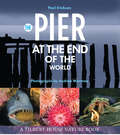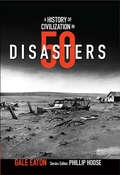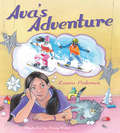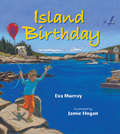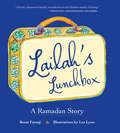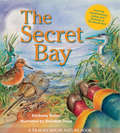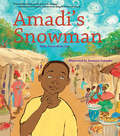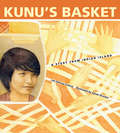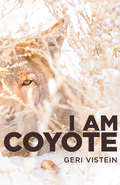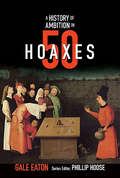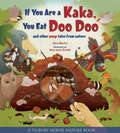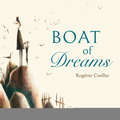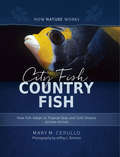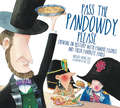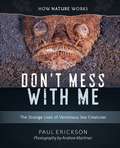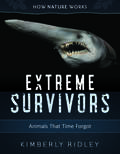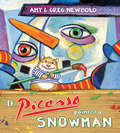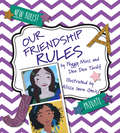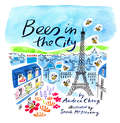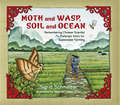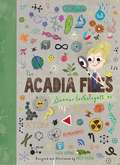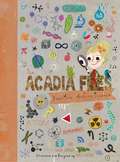- Table View
- List View
The Pier at the End of the World (Tilbury House Nature Book #0)
by Paul Erickson Andrew MartinezWith lyrical writing and stunning underwater photography, this picture book follows a day in the life of the denizens lurking in the cold, tide-swept waters beneath a remote pier on the shore of a northern sea. Vivid photos of a wolf fish munching a sea urchin, a hermit crab switching shells, a sea slug arming itself with stinging cells stolen from an anemone, a 35-pound lobster guarding his domain, and other exotic creatures take us from dawn to darkness. Colorful panoramic paintings show us the bigger picture, including the eyes of nighttime predators and the creatures who are missing the following morning.
A History of Civilization in 50 Disasters
by Phillip Hoose Gale EatonThe History in 50 series explores history by telling thematically linked stories. Each book includes 50 illustrated narrative accounts of people and events some well-known, others often overlooked that, together, build a rich connect-the-dots mosaic and challenge conventional assumptions about how history unfolds. The Fall 2015 list also includes A History of Travel in 50 Vehicles. Future titles include A History of Medicine in 50 Discoveries, A History of American Culture in 50 Innovators, A History of the Universe in 50 Milestones, A History of Sports in 50 Athletes, and A History of Progress in 50 Hoaxes. In A History of Civilization in 50 Disasters, Gale Eaton weaves tales of the disasters that happen when civilization and nature collide. Volcanoes, fires, floods, and pandemics have devastated humanity for thousands of years, and human improvements such as molasses holding tanks, insecticides, and deepwater oil rigs have created new, unforeseen hazards yet civilization has advanced not just in spite of these disasters but in part because of them.
A History of Civilization in 50 Disasters (History in #50)
by Phillip Hoose Gale EatonThe earth shakes and cracks open. Volcanoes erupt. Continents freeze, bake, and flood. Droughts parch the land. Wildfires and hundred-year storms consume anything in their paths. Invisible clouds of disease and pestilence probe for victims. Tidal waves sweep ashore from the vast sea. The natural world is a dangerous place, but one species has evolved a unique defense against the hazards: civilization. Civilization rearranges nature for human convenience. Clothes and houses keep us warm; agriculture feeds us; medicine fights our diseases. It all works--most of the time. But key resources lie in the most hazardous places, so we choose to live on river flood plains, on the slopes of volcanoes, at the edge of the sea, above seismic faults. We pack ourselves into cities, Petri dishes for germs. Civilization thrives on the edge of disaster. And what happens when natural forces meet molasses holding tanks, insecticides, deepwater oil rigs, nuclear power plants? We learn the hard way how to avoid the last disaster--and maybe how to create the next one. What we don't know can, indeed, hurt us. This book's white-knuckled journey from antiquity to the present leads us to wonder at times how humankind has survived. And yet, as Author Gale Eaton makes clear, civilization has advanced not just in spite of disasters but in part because of them. Hats off to human resilience, ingenuity, and perseverance! They've carried us this far; may they continue to do so into our ever-hazardous future. The History in 50 series explores history by telling thematically linked stories. Each book includes 50 illustrated narrative accounts of people and events--some well-known, others often overlooked--that, together, build a rich connect the-dots mosaic and challenge conventional assumptions about how history unfolds. Dedicated to the premise that history is the greatest story ever told. Includes a mix of "greatest hits" with quirky, surprising, provocative accounts. Challenges readers to think and engage. Includes a glossary of technical terms; sources by chapter; teaching resources as jumping-off points for student research; and endnotes.
Ava's Adventure
by Laura Pedersen Penny WebberDisappointed that she can't go on a snowboarding trip with her friend, Ava escapes to her room, where she finds that the power of imagination and her own creativity take her farther than any snowboard could.
Island Birthday
by Jamie Hogan Eva Murray<P><P>*2016 Maine Lupine Award Winner* <P><P>Riley’s birthday is coming, but the mail plane with his gifts from the mainland hasn’t been able to get to the island for days because of bad weather. <P><P>In a mood that matches the weather, he agrees to help Uncle Harv collect driftwood to make furniture. One thing leads to another as it always does on a small island, and eventually Riley realizes that everything he needs for a great birthday is already right at hand. Fountas & Pinnell Level O
Lailah's Lunchbox
by Lea Lyon Reem FaruqiLailah is in a new school in a new country, thousands of miles from her old home, and missing her old friends. When Ramadan begins, she is excited that she is finally old enough to participate in the fasting but worried that her classmates won't understand why she doesn't join them in the lunchroom. Lailah solves her problem with help from the school librarian and her teacher and in doing so learns that she can make new friends who respect her beliefs. This gentle, moving story from first-time author Reem Faruqi comes to life in Lea Lyon's vibrant illustrations. Lyon uses decorative arabesque borders on intermittent spreads to contrast the ordered patterns of Islamic observances with the unbounded rhythms of American school days.
The Secret Bay (Tilbury House Nature Book)
by Rebekah Raye Kimberly Ridley<P><P>AWARDS: *Moonbeam Silver*, *John Burroughs Association Riverby 2016 Award* <P><P> Estuaries form where river meets sea and fresh water mixes with salt. Teeming with life, these places of salt marshes, mudflats, and tidal backwaters serve as nursery areas for oceangoing fish, migratory stopovers for shorebirds, and homes for an amazing diversity of snails, bivalves, fish, mammals, horseshoe crabs, fiddler and blue crabs, terrapin turtles, plankton, and many others, all of whom we meet in the pages of this delightful book. <P><P> Narrated in the poetic voice of the estuary itself, and accompanied by natural-history sidebars about estuary plants, animals, and cycles, THE SECRET BAY is another topnotch nature book from the author and illustrator of the award-winning, bestselling The Secret Pool. <P><P> A stand-alone book and a stunning companion volume to Ridley and Raye’s award-winning Secret Pool. Ridley deftly augments the estuary’s lyrical narrative voice with sidebars about the plants, animals, and natural processes of an estuary. Raye’s gorgeous watercolors reveal new features and hidden treats with each reading. Back matter includes The Estuary Food Web, Great Escapes (how estuary animals avoid predators), and an author’s note about the challenges facing estuaries. A perfect book for the budding naturalist and for his or her parents and teachers. <P><P> Fountas & Pinnell Level S Lexile 1180
Amadi's Snowman: A Story Of Reading
by Katia Novet Saint-Lot Dimitria TokumboWhy does Amadi's mother insist he learn to read words when he is going to be a great businessman? Why should an Igbo man of Nigeria waste precious time on books, anyway? When Amadi disobeys his mother and runs off to the market instead of sticking around for a reading lesson, he encounters a much-admired older boy secretly reading at a book stall. Crowding himself in among the stacks of books, Amadi becomes intrigued by a storybook with pictures of a strange white creature with a carrot for a nose. Over the course of a typical mischievous day, unable to shake his questions about the snowman, Amadi discovers the vast world reading could open up--especially for an Igbo man of Nigeria.
Kunu's Basket: A Story From Indian Island
by Lee Decora Francis Susan DruckerYoung Kunu wants to make a pack basket on his own. He's watched his dad and his grandfather make baskets on Indian Island, but now that he's trying to make one for himself, it s not as easy as he thought it would be. Kunu isn't a quitter, but he gets so frustrated that he has to go outside to cool off. When his grandfather asks Kunu to help him with some basket-making tasks, Kunu comes to understand that it is the tradition in his family for one generation to help the next. He also learns that it might take several tries before he gets it right. Can he be patient enough to try again and again? His grandfather shows him the way, and at last Kunu's first basket is something to celebrate.
I Am Coyote
by Geri VisteinCoyote is three years old when she leaves her family in Algonquin Provincial Park in Ontario and embarks on a 500-mile odyssey eastward in search of a territory of her own and a mate to share it with. Journeying by night through the dead of winter, she endures extreme cold, hunger, and a harrowing crossing of the St. Lawrence River in Montreal before her cries of loneliness are finally answered in the wilds of Maine. The mate she finds must gnaw off a paw to escape a trap. The first coyotes in the northern U.S., they raise pups (losing several), experience summer plenty, winter hardship, playfulness, and unmistakable love and grief. Blending science and imagination with magical results, this story tells how coyotes may have populated a land desperately in need of a keystone predator, and no one who reads it will doubt the value of their ecological role. Told through the eyes of a coyote, this is a riveting story with mythic dimensions. A work of creative nonfiction that adheres to the highest standards of wildlife biology. With deep insights into wild canine behavior, penetrates the veil of "otherness" that separates us from the animals with whom we share the planet. An appendix explores the history and current status of coyotes in North America. Native Americans considered them tricksters, messengers, and companions. Given the disappearance of wolves, they are even more critical to ecosystem health today. The author explains how, without coyotes, prey species are weakened by disease and parasites. Geri Vistein speaks extensively about coyote-human interactions to a variety of audiences. She is a nationally recognized expert on the topic and maintains the website CoyoteLivesInMaine.com. A QR code in the book takes readers to a hauntingly beautiful recording of coyote song.
A History of Ambition in 50 Hoaxes (History in #50)
by Phillip Hoose Gale EatonWhat do the Trojan Horse, Piltdown Man, Keely Motor Company, and Ponzi Scheme have in common? They were all famous hoaxes, carefully designed and bolstered with false evidence. The con artists in this book pursued a variety of ambitions--making money, winning wars, mocking authority, finding fame, trading an ordinary life for a glamorous one--but they all chose the lowest, fastest road to get there. Every hoax is a curtain, and behind it is a deceiver operating levers and smoke machines to make us see what is not there and miss what is. As P.T. Barnum knew, you can short-circuit critical thinking in any century by telling people what they want to hear. Most scams operate on a personal scale, but some have shaped the balance of world power, inspired explorers to sail uncharted seas, derailed scientific progress, or caused terrible massacres. A HISTORY OF AMBITION IN 50 HOAXES guides us through a rogue's gallery of hustlers, liars, swindlers, imposters, scammers, pretenders, and cheats. In Gale Eaton's wide-ranging synthesis, the history of deception is a colorful tour, with surprising insights behind every curtain.
If You Are A Kaka, You Eat Doo Doo: And Other Poop Tales From Nature (Tilbury House Nature Book #0)
by Sara Lynn Cramb Sara MartelWombat poos are box-shaped to stay where they're deposited and serve as messages to other animals. Baby golden tortoise beetles pile poop on their backs to create a shield as protection from predators. Silver-spotted skipper caterpillars can shoot their poops 40 times their own body length to conceal their true locations. Baby hoopoes squirt their poops into the eyes of attackers, and who wants feces in their faces? Baby Ozark blind cave salamanders use gray bat guano for food. The bottom (!!) line: Ever-inventive Nature finds a thousand uses for poop. Nothing goes to waste (!!). This book is a guaranteed crowd-pleaser with a lot of information to share.
Boat of Dreams
by Rogério CoelhoSelected for the 2018 Bank Street College of Education Best Children’s Books of the Year 2017 NYPL Best Books for Kids List *2017 IPPY Independent Publishers Gold Medalist* *Starred Review School Library Journal* *Starred Review- Booklist**Brazil's 2015 Jabuti Award for best children's illustration* How does a fastidious old man with bowler, umbrella, suspenders, and a Salvador Dali mustache come to live on a deserted island? How does a boy come to live alone in an apparently deserted city? Are they separated by distance or by time? Does the man dream the boy? Does the boy dream the man? Is a blank paper in a floating bottle an invitation to imagine our futures? Is the man’s flying boat an encouragement to the boy to dream? Are the man and the boy the same person—the boy dwelling in the man’s memory? Is a message in a bottle the earthbound dreams of the elderly? Is a flying boat the unconstrained dreams of the young? This wordless, many-layered 80-page picture book invites all these interpretations and more. The intricately detailed illustrations reveal new wonders with each viewing. Neither children nor adults will ever tire of this wonderful testament to imagination, memory, and dreams.
City Fish Country Fish: How Fish Adapt To Tropical Seas And Cold Oceans (How Nature Works #0)
by Mary M. Cerullo Jeffrey L. Rotman* School Library Journal Starred Review * * Honor Book SSLI (Society of School Librarians International) * *Skipping Stones Honor Book* Fish that live in tropical seas are like city dwellers, packed into reefs and surrounded by life in great variety and urgent motion,Fish that live in tropical seas are like city dwellers, packed into reefs andsurrounded by life in great variety and urgent motion, day and night. Through color, shape,size, and other adaptations, city fish and country fish have evolved to survive in their particular habitats.In City Fish, Country Fish, Mary Cerullo uses this powerful analogy and Jeffrey Rotman’s vibrant underwater photos to captivate young readers with the wild variety of ocean life. The second edition of this popular book includes new information about the effects of climate change on fish and their habitats and about great white sharks, who are among the few species who roam back and forth between cold and tropical waters. Fountas & Pinnell Level T
Far Side of the Moon: The Story Of Apollo 11's Third Man
by Alex Irvine Ben Bishop*Junior Library Guild Selection 2017* A unanimous selection to the 2018 Maverick Graphic Novel List! This graphic retelling of the Apollo 11 moon-landing mission follows astronaut Michael Collins, commander of the lunar orbiter, to the far side of the moon. When the Earth disappears behind the moon, Collins loses contact with his fellow astronauts on the moon’s surface, with mission control at NASA, and with the entire human race, becoming more alone than any human being has ever been before. In total isolation for 21 hours, Collins awaits word that Neil Armstrong and Buzz Aldrin have managed to launch their moon lander successfully to return to the orbiter—a feat never accomplished before and rendered more problematic by the fuel burn of their difficult landing. In this singularly lonely and dramatic setting, Collins reviews the politics, science, and engineering that propelled the Apollo 11 mission across 239,000 miles of space to the moon. Fountas & Pinnell Level U <P><P> <i>Advisory: Bookshare has learned that this book offers only partial accessibility. We have kept it in the collection because it is useful for some of our members. Benetech is actively working on projects to improve accessibility issues such as these.</i>
Pass The Pandowdy, Please: Chewing On History With Famous Folks And Their Fabulous Foods
by Abigail Zelz Eric Zelz*CBC/NCSS Notable Social Studies Trade Book* What do Napoleon, Cleopatra, George Washington, Gandhi, Queen Victoria, Columbus, Neil Armstrong, Montezuma, Paul Revere, Babe Ruth, Abraham Lincoln, Sacagawea, and Katsushika Hokusai have in common? They are all among the historical figures portrayed in this delightful book by writer Abby Ewing Zelz and cartoonist Eric Zelz. Just like us, the great movers and shakers of history had to eat, and their favorite foods turn out to be a highly entertaining thread to follow through the history of our small planet. History and biography have never been this tasty! Includes do it yourself historic Pandowdy recipe Includes backmatter with brief bios of featured historic figures Fountas & Pinnell Level W
Finding the Speed of Light: The 1676 Discovery That Dazzled The World
by Mark WestonKirkus Star Mark Weston’s high-interest story and Rebecca Evans’s colorful graphics make scientific discovery the coolest thing this side of Jupiter. More than two centuries before Einstein, using a crude telescope and a mechanical timepiece, Danish astronomer Ole Romer measured the speed of light with astounding accuracy. How was he able to do this when most scientists didn’t even believe that light traveled? Like many paradigm-shattering discoveries, Romer’s was accidental. Night after night he was timing the disappearance and reappearance of Jupiter’s moon Io behind the huge, distant planet. Eventually he realized that the discrepancies in his measurements could have only one explanation: Light had a speed, and it took longer to reach Earth when Earth was farther from Jupiter. All he needed then to calculate light’s speed was some fancy geometry.
Don't Mess With Me: The Strange Lives Of Venomous Sea Creatures (How Nature Works #0)
by Paul Erickson Andrew MartinezThe role of venoms in nature … and in human medicine Why are toxins so advantageous to their possessors as to evolve over and over again? What is it about watery environments that favors so many venomous creatures? Marine biologist Paul Erickson explores these and other questions with astounding images from Andrew Martinez and other top underwater photographers. GREAT for teaching STEM Marine Biology Scorpions and brown recluse spiders are fine as far as they go, but if you want daily contact with venomous creatures, the ocean is the place to be. Blue-ringed octopi, stony corals, sea jellies, stonefish, lionfish, poison-fanged blennies, stingrays, cone snails, blind remipedes, fire urchins—you can choose your poison in the ocean. Venoms are often but not always defensive weapons. The banded sea krait, an aquatic snake, wriggles into undersea caves to prey on vicious moray eels, killing them with one of the world’s most deadly neurotoxins, which it injects through fangs that resemble hypodermic needles.
Extreme Survivors: Animals That Time Forgot (How Nature Works #0)
by Kimberly Ridley<p>Selected for the 2018 Bank Street College of Education Best STEM Children’s Books of the Year <p>What do the goblin shark, horseshoe crab, the “indestructible” water bear, and a handful of other bizarre animals have in common? <p>They are all “extreme survivors,” animals that still look much like their prehistoric ancestors from millions of years ago. <p>Meet ten amazing animals that appear to have changed little in more than 100 million years. They are the rare exceptions to the rule. <p>More than 99 percent of all life forms have gone extinct during the 3.6-billion-year history of life on Earth. Other organisms have changed dramatically, but not our extreme survivors. Evolution may have altered their physiology and behavior, but their body plans have stood the test of time. <p>How have these living links with Earth’s prehistoric past survived? The search for answers is leading scientists to new discoveries about the past—and future—of life on Earth. The survival secrets of some of these ancient creatures could lead to new medicines and treatments for disease. <p>Written in a lively, entertaining voice, Extreme Survivors provides detailed life histories and strange “survival secrets” of ten ancient animals and explains evolution and natural selection. Extensive back matter includes glossary, additional facts and geographic range for each organism and a geologic timeline of Earth. <p><B>F&P Level V </B> <P><P><i>Advisory: Bookshare has learned that this book offers only partial accessibility. We have kept it in the collection because it is useful for some of our members. To explore further access options with us, please contact us through the Book Quality link. Benetech is actively working on projects to improve accessibility issues such as these.</i>
If Picasso Painted a Snowman
by Amy Newbold Greg NewboldMaryland Blue Crab Honor Book 2018 A big, brightly colored, playful introduction to various important painters and art movements. If someone asked you to paint a snowman, you would probably start with three white circles stacked one upon another. Then you would add black dots for eyes, an orange triangle for a nose, and a black dotted smile. But if Picasso painted a snowman… From that simple premise flows this delightful, whimsical, educational picture book that shows how the artist’s imagination can summon magic from a prosaic subject. Greg Newbold’s chameleon-like artistry shows us Roy Lichtenstein’s snow hero saving the day, Georgia O’Keefe’s snowman blooming in the desert, Claude Monet’s snowmen among haystacks, Grant Wood’s American Gothic snowman, Jackson Pollock’s snowman in ten thousand splats, Salvador Dali’s snowmen dripping like melty cheese, and snowmen as they might have been rendered by J. M. W. Turner, Gustav Klimt, Paul Klee, Marc Chagall, Georges Seurat, Pablita Velarde, Piet Mondrian, Sonia Delaunay, Jacob Lawrence, and Vincent van Gogh. Our guide for this tour is a lively hamster who—also chameleon-like—sports a Dali mustache on one spread, a Van Gogh ear bandage on the next. “What would your snowman look like?” the book asks, and then offers a page with a picture frame for a child to fill in. Backmatter thumbnail biographies of the artists complete this highly original tour of the creative imagination that will delight adults as well as children. Fountas & Pinnell Level O
Our Friendship Rules
by Peggy Moss Dee Dee Tardif Alissa Imre Geis*Moonbeam GOLD Award* Our Friendship Rules is a story of betrayal and forgiveness and a guidebook on relationships. A vibrant new cover and new backmatter suggesting the rules of an enduring friendship highlight this new edition of a Tilbury House children’s classic. Kids are under a lot of pressure to fit in. Sometimes bowing to this pressure forces them to betray their own ideas of what is right and wrong. Alexandra and Jenny have been best friends for a long time, but when Alexandra is dazzled by a glamorous new girl at school, she’s willing to do almost anything to be the cool girl’s friend, including first shunning Jenny and then revealing Jenny’s biggest, most important secret. Seeing the hurt she has caused and realizing how bad it feels to lose her best friend, Alexandra then seeks a way to regain the relationship that means far more to her than being invited to sit with the popular girls. Ultimately, she and Jenny write down the rules that will cement their friendship forever. OUR FRIENDSHIP RULES is both a lyrical story of forgiveness and a guidebook on relationships. Author Peggy Moss employs her training as a mediator and communication expert to provide a simple, sweet but instructive tale of how to get along. The evocative collage-paintings of Alissa Imre Geis further illustrate the many layers of personality. Her Alexandra will amaze you with her artistic eye, and her Jenny will make you smile with her practical sensibility as you see these best friends reconnect with the help of their friendship rules. Fountas & Pinnell Level O
Bees in the City
by Andrea Cheng Sarah McMenemy2018 Green Earth Book Award Finalist Lionel lives in a Paris apartment building but loves keeping bees with his Aunt Celine at her farm outside the city. But when her bees start dying, how can he help? The solution, he realizes, is in the rooftop gardens and window boxes of his apartment neighbors, representing a varied and continuously blooming array of flowers that the bees will love. Aunt Celine must bring her bees to Paris! But first he and his friends Alice and Samir must convince their skeptical neighbors and landlord, Mr. Dubi, that this is a good idea. Adorned with Parisian skylines, Bees in the City is a love letter to the City of Light and a celebration of the can-do spirit of kids. Sarah McMenemy’s illustrations recall the Parisian magic of Madeleine. The book’s backmatter explores urban beekeeping and rooftop gardening in greater depth. Fountas & Pinnell Level P
Moth and Wasp, Soil and Ocean: Remembering Chinese Scientist Pu Zhelong
by Sigrid Schmalzer Melanie Linden ChanMoth and Wasp, Soil and Ocean tells its story through the memories of a farm boy who, inspired by Pu Zhelong, became a scientist himself. The narrator is a composite of people Pu Zhelong influenced in his work. With further context from Melanie Chan’s historically precise watercolors, this story will immerse young readers in Chinese culture, the natural history of insects, and the use of biological controls in farming. Backmatter provides context and background for this lovely, sophisticated picture book about nature, science, and Communist China. “The first time I saw a scientist in my village was also the first time I saw a wasp hatch out of a moth’s egg,” writes the narrator of this picture book about Chinese scientist Pu Zhelong. “In that moment I could not have said which was the more unexpected—or the more miraculous.” In the early 1960s, while Rachel Carson was writing and defending Silent Spring in the U.S., Pu Zhelong was teaching peasants in Mao Zedong’s Communist China how to forgo pesticides and instead use parasitic wasps to control the moths that were decimating crops and contributing to China’s widespread famine. This story told through the memories of a farm boy (a composite of people inspired by Pu Zhelong) will immerse young readers in Chinese culture, the natural history of insects, and sustainable agriculture. Backmatter provides historical context for this lovely, sophisticated picture book. The author, Sigrid Schmalzer, won the Joseph Levenson Post-1900 Book Prize for 2018 for her book Red Revolution, Green Revolution. This is the most prestigious prize for a book about Chinese history, and the book upon which Moth and Wasp, Soil and Ocean is based. Fountas & Pinnell Level U
The Acadia Files: The Summer Investigations (The Acadia Files #1)
by Katie Coppens Holly HatamThe Acadia Files: Summer Investigations presents five summer stories, each one followed by Acadia’s science notebook pages with her simple explanations and lively, whimsical drawings of natural phenomena. The Acadia Files is a fun introduction to the wonders of science, using real-world scenarios to make scientific inquiry relatable and understandable. Parents and educators can use The Acadia Files to let kids discover for themselves what it’s like to be curious about the world and to satisfy that curiosity with scientific thinking. Acadia Files for autumn, winter, and spring will follow on future lists. The Acadia Files: Summer Investigations offers an engaging new way to apply the scientific method to real-world scenarios. Great for teaching STEAM Acadia Greene wants answers. Who keeps stealing her blueberries just as they ripen on the bushes? Why is her hair curly? Why does the sun wake her up so early in the summer? Why does the tide submerge her sandcastles? How do rocks become sand? Acadia doesn’t set out to do science, but she has these important questions and her scientist parents refuse to simply feed her the answers. “Conduct an experiment,” they tell her. “Use the scientific method.” So Acadia gathers evidence, makes hypotheses, designs experiments, uses the results to test her hypotheses, and draws conclusions. Acadia does science.
The Acadia Files: Book Two, Autumn Science (The\acadia Files Ser. #1)
by Katie Coppens Holly HatamBooks that explore science through adventure The Acadia Files: Book Two, Autumn Science presents five stories of fall, each one followed by Acadia’s science notebook pages with her simple explanations and lively, whimsical drawings of natural phenomena. The Acadia Files is a fun introduction to the wonders of science, using real-world scenarios to make scientific inquiry relatable and understandable. Parents and educators can use The Acadia Files to let kids discover for themselves what it’s like to be curious about the world and to satisfy that curiosity with scientific thinking. Acadia Greene wants answers. What happened to the frogs she used to see at her favorite local pond? Why do leaves change color in the fall, and why don’t evergreen needles do the same? What is the water cycle, and what is transpiration? How do time zones work, and why does the sun set at different times in different places within a single zone? How do germs infect us? Acadia doesn’t mean to do science, but she has questions and her parents refuse to simply give her the answers. “Conduct an experiment,” they tell her. “Use the scientific method.” So Acadia makes hypotheses, designs experiments, analyzes data, and draws conclusions. Acadia does science. The author, Katie Coppens writes a recurring column for NSTA's middle school magazine Science Scope on science and literacy called "The Integrated Classroom."
